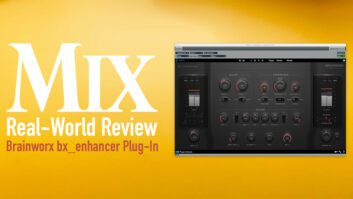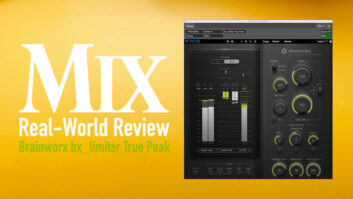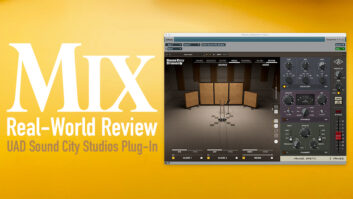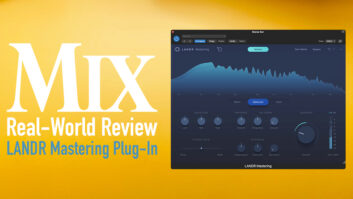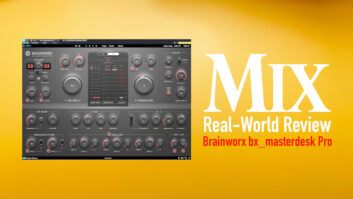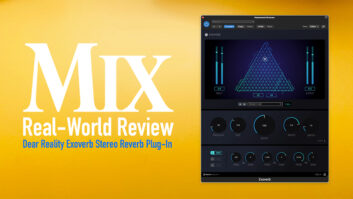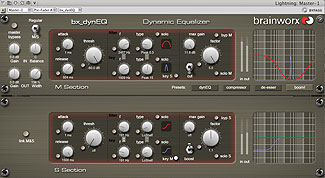
Bx_dyn EQ provides independent control sections for mid and side channels.
Unlike typical equalizers, the Brainworx bx_dynEQ applies EQ dynamically, but only when the audio signal exceeds a user-adjustable threshold. Mid-side (M/S) processing, sidechain filtering and compression capabilities add to the power of this unique (TDM, RTAS, AU, VST) plug-in.
Channel This
Bx_dynEQ can process mono, multimono or stereo tracks. The latter can be equalized in either normal stereo or M/S mode. M/S encoding and decoding automatically happen behind the scene, requiring no special setup.
Mono and normal stereo versions provide one audio path filter and one sidechain filter per channel. (Left and right channels share the same filter settings and sidechain.) M/S mode provides four filters for mid and side channels: one for each audio path and one for each channel’s sidechain. In M/S mode, the sidechain for either channel can trigger the other channel.
The frequency and Q of each filter are adjustable. Available filter types include low and high shelving, peaking (bell), bandpass, highpass and lowpass filters, and both bass and presence shifters. The bass and presence shifters apply opposite actions (boost and cut) in adjacent bands to shift the program’s timbre. Each channel and its sidechain can also be set to flat response.
After you’ve selected your filters, set bx_dynEQ for either EQ boost or cut. Adjust the attack and release controls for the speeds at which you want equalization to be applied and then nulled as signal first exceeds — and then falls below — your threshold setting, respectively. The plug-in’s factor control sets the depth of processing up to the limit (in dB) set by the max gain control.
You can solo the mid or side channel and link one or more of their filter controls, or bypass mid or side processing or the entire plug-in. Separate controls are provided for I/O levels and, for stereo tracks, for L/R balance and width. The GUI includes multisegment I/O meters and EQ graphs that dynamically update to show response. Only four factory presets are included; they can be overwritten. Otherwise, there’s no way to save your own presets outside of whatever facilities your DAW provides.
Fine Dyning
The AU plug-in (tested in Digital Performer 5.13) demanded very low CPU power from my 8-core, 2.8MHz Mac Pro running OS 10.5.4. Mastering a mix using the Boom! preset as a starting point, I could easily make the kick drum thump more or less without changing the amount of apparent bottom end on other elements of the mix. I applied a lowpass filter with a 55Hz corner frequency to the mid channel’s sidechain and a narrow bandpass filter — centered on 32 Hz — to the mid channel’s audio path with fast attack and release times.

Working with the mid channel again, I could remove most of the lead vocal on a mix by setting a very broad bell-curve cut at 2.45 kHz and dialing in a slightly lower center frequency in the sidechain with a notch filter.
Turning up the width control increased the stereo width of a mix. When this made hardpanned instruments too loud, I made bx_dynEQ act like a wideband compressor by applying cut in the side channel with a flat filter setting. The result was a wide, but tight mix that sounded phenomenal.
On another mix, the bass guitar was too boomy but the kick drum sounded great. I set up a steep lowpass filter at 50 Hz in the sidechain and an attenuating bandpass centered at 193 Hz in the audio path of the mid channel. Using 48ms attack and 31ms release times, bx_dynEQ preserved the kick’s timbre while taming the bass guitar’s boominess.
Bx_dynEQ is one powerful and great-sounding plug-in that mixing — and especially mastering — engineers will find indispensable.
Mix contributing editor Michael Cooper is the owner of Michael Cooper Recording in Sisters, Ore.

